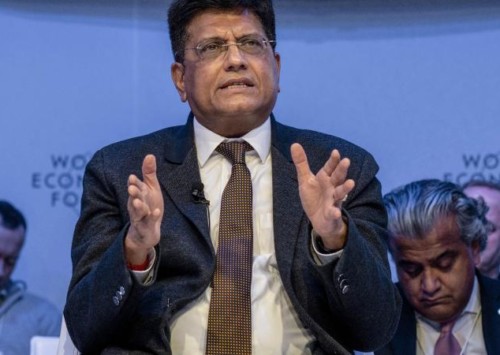Facial recognition raising hackles

India has been moving surreptitiously towards facial recognition, with the government and notably law enforcing agencies using the technology without any legal framework or regulations
Facial recognition is being touted as a major technological breakthrough. Easy to abuse, its adoption needs to be strictly controlled.
Last month, officials in Suzhou city in Anhui province in south-eastern China were left red-faced and forced to offer a quick apology after they called out people walking around the city in pyjamas, using facial recognition technology that not only identified them by names but also publicly displayed other personal information about them.
In November last year, a Chinese professor sued a private wildlife park for forcing all visitors to use highly personal data such as facial recognition or fingerprints to get admission into the park. In the same month, the British police admitted that facial recognition technology deployed by them, on a pilot basis, gave erroneous responses as often as 81 pc of time. And in December, a study by the US government found that facial recognition systems can produce wildly inaccurate results, especially for non-whites. The study of dozens of facial recognition software programmes showed ‘false positives’ (wrong match) rates for Asian and African American as much as 100 times higher than for whites. The study also found that some algorithms assigned the wrong gender to black females almost 35 pc of the time.
The study came even as the US and many other nations witness widespread deployment of the technology for not only law enforcement but also at airports, in banking, retailing, schools, homes and for personal technology such as unlocking smartphones. Critics of the technology say that the potential for errors is too great which could result in the jailing of innocent people, besides making the databases vulnerable to hacking, misuse and even abuse.
In view of these reports as well as the fact that the technology seems to be moving ahead rapidly without any legal or regulatory framework to set the basic rules governing it, the European Union says it wants to ban public deployment of facial recognition for upto five years, time that would allow the regulators to get a grip over the technology, while also stabilising the development of facial recognition and various applications based on it.
But so far the EU stands out like a sore thumb amongst world’s governments, which are mainly either happy to let their security agencies have a free hand over the use and often abuse of this technology and also allow businesses a free ride, just as they allowed the social media companies without any regulation for over two decades, till they became too big and without any regulation, leading to large-scale abuse as has become evident from Facebook’s travails over the last couple of years.
One country where facial recognition usage has been used by the government as well as the businesses in an untrammelled manner is China. Over the past few years, China has aggressively moved towards deploying hardware for facial recognition. In 2017, it had a mere 170 million CCTV cameras. However, by the end of this year, China is expected to have nearly 600 million surveillance cameras in public areas, with a majority of these equipped with artificial intelligence tools needed for facial recognition.
However, the widespread use of facial recognition technology, especially by private companies and institutions, is indeed causing a furore even in the Middle Kingdom, which has been used to a very heavy-handed approach by the state and where ‘security’ trumps everything else. But the large-scale and rapid adoption of facial recognition is raising hackles even here.
The other Asian giant, India, has been moving surreptitiously towards facial recognition, with the government and notably law enforcing agencies using the technology without any legal framework or regulations. During the on-going demonstrations across the country against a discriminatory law that provides expedited access to Indian citizenship, the police has been using cameras and drones to identify the protestors and track them down later, leading to a furore.
Indian law enforcement agencies have been using facial recognition in the restive region of Jammu & Kashmir for the past few years in an attempt to identify, isolate or arrest the young leaders of protests in the valley. Over the past six years, since the right wing Modi government took charge in New Delhi, the Indian law enforcement agencies have already been given a free hand in using strong arm tactics to crush dissent, even if peaceful and guaranteed by the Constitutional fundamental rights, making India under Modi closely resemble China under Xi Jinping. Letting the security agencies use these technologies in an unregulated manner can only threaten human rights even more.
Thankfully, though, in India, the businesses have not yet ventured into facial recognition, either because they are unprepared or because of lack of clarity of the privacy laws on this issue.
Across the Pacific, in the United States, the attitude towards this so-called ground breaking technology is equally divided. While the federal government has yet to frame any rules governing the use of facial recognition, whether for use by companies, private citizens or even the law enforcement agencies, some cities have taken the call and banned its use outright, calling it an unacceptable invasion of privacy. Last May, San Francisco became the first city in the US to take the step and since then three other cities, notably Berkeley and Oakland have followed suit.
It is time that the world, or at least the democracies of the world, followed the example set by the EU and ensure that the protection of citizens’ rights becomes the paramount benchmark in curbing the use of this and other highly invasive technologies, almost all by-products of artificial learning. While technology companies could be allowed to keep testing these products inside their laboratories, public deployment should be allowed only when the technology has been perfected. Even if it means slowing things down tremendously. Governments must act as guardians of civic rights rather than as extensions of businesses, for whom the bottom line is always in dollars.












